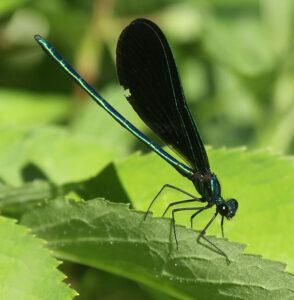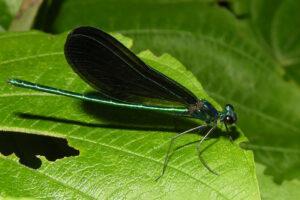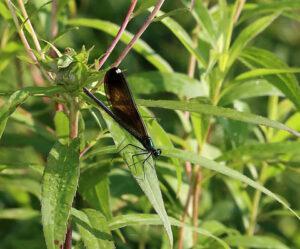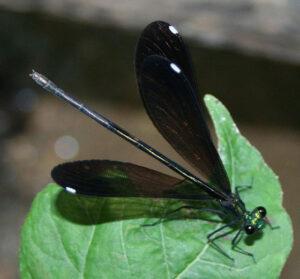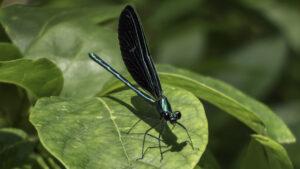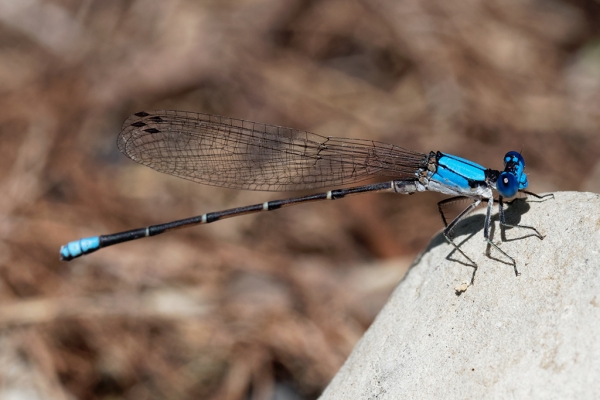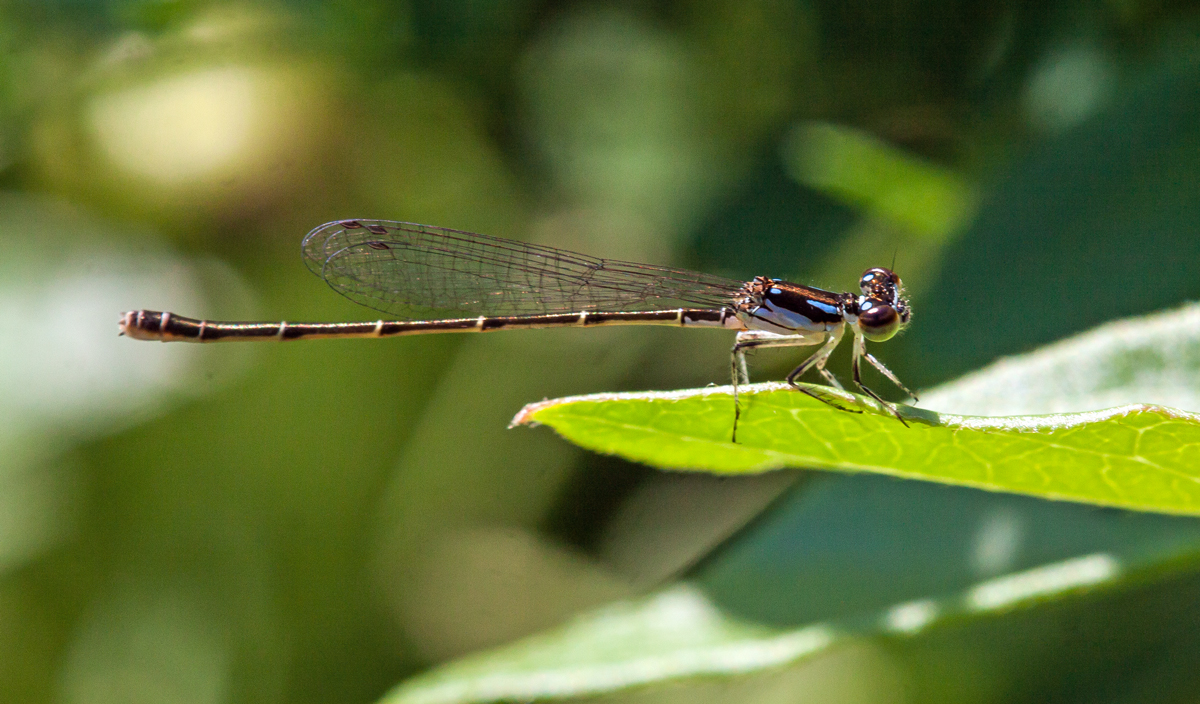Ebony Jewelwing (Calopteryx maculata)
Updated on
17/11/2022The ebony jewelwing is a broad-winged damselfly that is also known by the name black-winged damselfly. It can be seen all year round in some places. In others, the flight season is March to October in the south and July or August in the north of its range.
Scientific Classification
- Class:Insecta
- Order:Odonata
- Suborder:Zygoptera
- Family:Calopterygidae
- Genus:Calopteryx
- Species:C. maculata
Conservation Status
Description
The size of the ebony jewelwing is 1.5-2.2 in (39-57 mm). The males have metallic blue-green bodies with black wings. The females are duller and brown with smoky wings that have white spots near the tips.
Distribution: Eastern United States, and southeastern Canada, west of the Great Plains.
Habitat: Near wooded rivers and streams. But can move far away from water.
Do They Bite/Sting: No.
Lifespan: 15-17 days on average.
Predators: Birds like the American robin, great crested flycatcher, red-winged blackbird, mallard, and blue jay; reptiles and amphibians such as the common snapping turtle, eastern painted turtle, and southern leopard frog; fish like the largemouth bass, bluegill, creek chub, yellow perch, channel catfish, northern hogsucker, and common carp; insects such as the large diving beetle, green darner, common water strider, and eastern dobsonfly; and mammals like the big brown bat.
Behavior and Characteristics
Diet
They eat giant willow aphids, tiger mosquitoes, fungus gnats, large diving beetles, crane flies, eastern dobsonflies, green darners, water fleas, freshwater triclads, aquatic oligochaetes, copepods, caddisflies, six-spotted tiger beetles, rotifers, amphipods, dogwood borers, and green hydra.
Life Cycle
1. Egg Stage
The females lay cylindrical eggs on the soft stems of aquatic plants.
2. Naiad Stage
The naiads are pale brown with darker marks on their bodies. They prey on small aquatic insects. When fully developed, they crawl out of water and molt.
3. Adult Stage
The adults mate in summer when the male clasps the female behind her head with his abdomen or tail.
Source
wiatri.net, squarespace-cdn.com, ncparks.gov, bugguide.net, jungledragon.com




